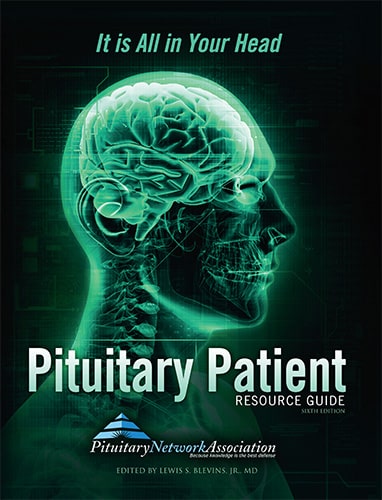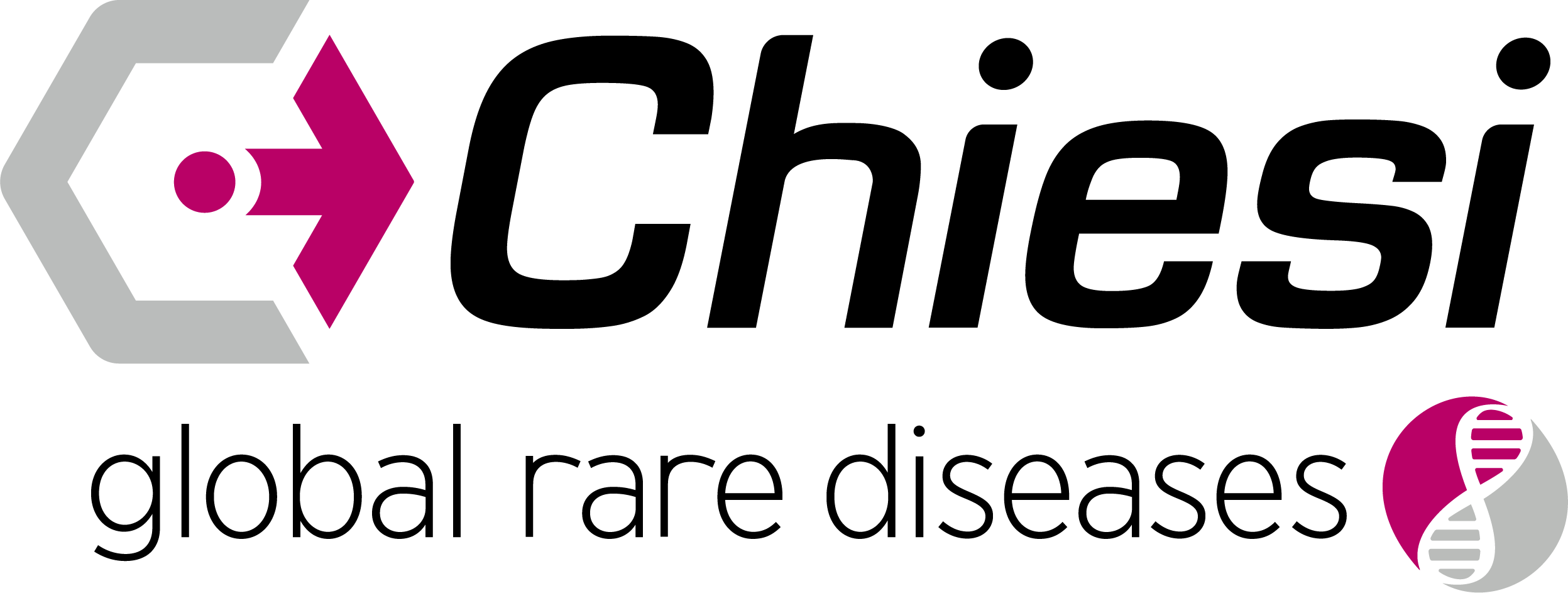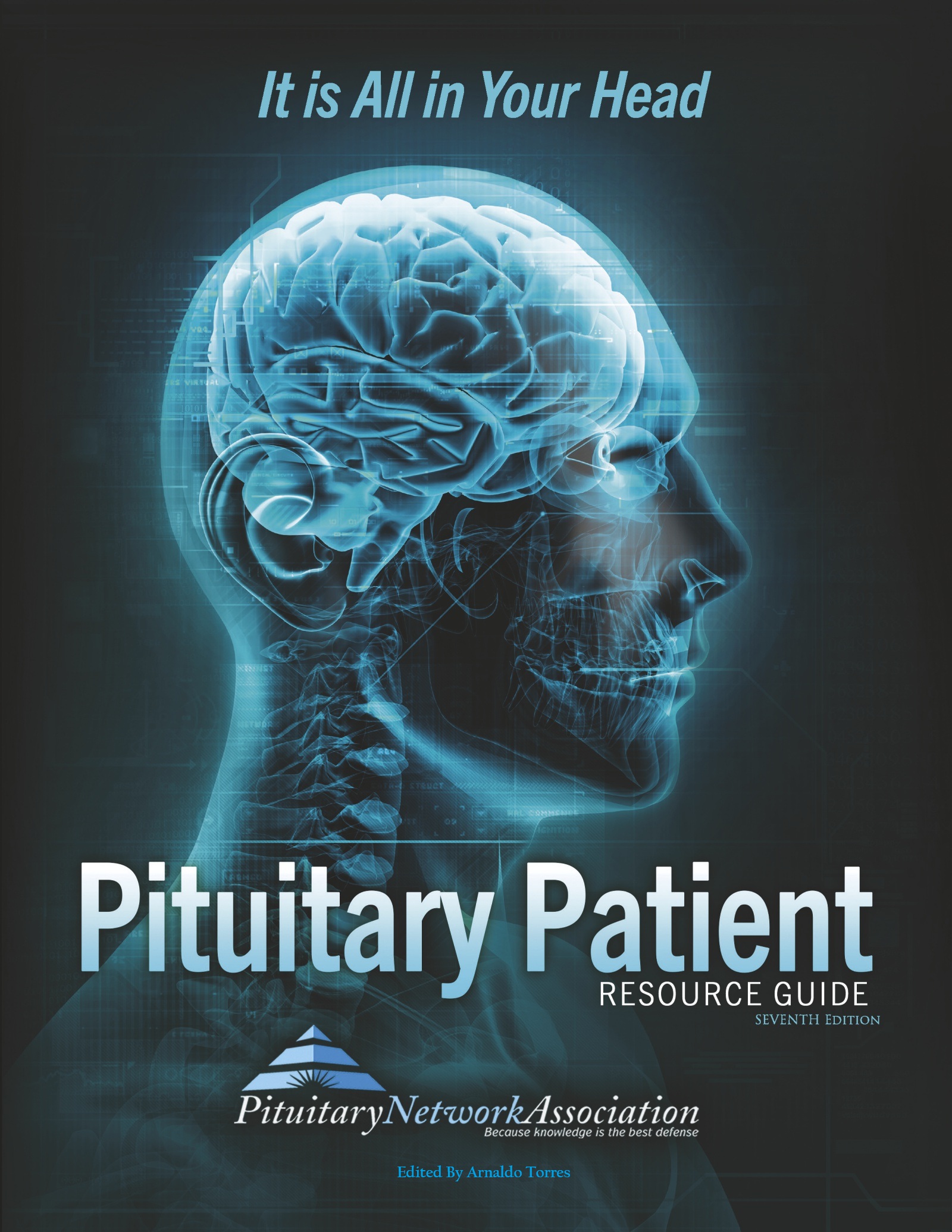News Articles February 2022
Written on 04 February 2022.
July 2024 Research Articles
Pituitary Tumors
Genome-Wide DNA Methylation Profiling as a Prognostic Marker in Pituitary Adenomas-A Pilot Study.
Møller MW, Andersen MS, Halle B, Pedersen CB, Boldt HB, Tan Q, Jurmeister PS, Herrgott GA, Castro AV, Petersen JK, Poulsen FR.Cancers (Basel). 2024 Jun 13;16(12):2210. doi: 10.3390/cancers16122210.
Zhu Z, Hu B, Zhu D, Li X, Chen D, Wu N, Rao Q, Zhang Z, Wang H, Zhu Y.J Endocrinol Invest. 2024 Jun 26. doi: 10.1007/s40618-024-02408-0. Online ahead of print.
Chiari I Malformation With Concomitant Nonfunctioning Pituitary and Adrenal Tumors.
Zielinski R, Khan A, Mirza FS.JCEM Case Rep. 2024 Jun 25;2(6):luae113. doi: 10.1210/jcemcr/luae113. eCollection 2024 Jun.
Pituitary Surgery
Adams OE, Olson SB, Lam H, Judge C, McClelland C, Lee MS, Venteicher AS.Neuroophthalmology. 2024 Jan 26;48(4):272-278. doi: 10.1080/01658107.2023.2299763. eCollection 2024.
Kemchoknatee P, Singhakul C, Arjkongharn N, Vongsa N, Tangon D, Srisombut T.Clin Ophthalmol. 2024 Jun 21;18:1779-1788. doi: 10.2147/OPTH.S463303. eCollection 2024.
Acromegaly
Personalized medicine in acromegaly: The ACROFAST study.
Marques-Pamies M, Gil J, Sampedro-Nuñez M, Valassi E, Biagetti B, Giménez-Palop O, Hernández M, Martínez S, Carrato C, Villar-Taibo R, Araujo-Castro M, Blanco C, Simón-Muela I, Simó-Servat A, Xifra G, Vázquez F, Pavón I, Rosado JA, García-Centeno R, Zavala R, Hanzu FA, Mora M, Aulinas A, Vilarrasa N, Librizzi S, Calatayud M, de Miguel P, Alvarez-Escola C, Picó A, Salinas I, Fajardo-Montañana C, Cámara R, Bernabéu I, Jordà M, Webb SM, Marazuela M, Puig-Domingo M.J Clin Endocrinol Metab. 2024 Jun 29:dgae444. doi: 10.1210/clinem/dgae444. Online ahead of print.
Glucose metabolism outcomes after pituitary surgery in patients with acromegaly.
Pascual-Corrales E, Biagetti B, Marazuela M, Asensio-Wandosel D, Rodríguez Berrocal V, Irigaray Echarri A, Novo-Rodríguez C, Calatayud M, Bernabéu I, Alvarez-Escola C, Tenorio-Jiménez C, González Molero I, Iglesias P, Blanco C, de Miguel P, López Mezquita E, Lamas C, Aulinas A, Gracia P, Recio-Córdova JM, Sampedro-Nuñez M, Paja M, Moure Rodríguez MD, Fajardo-Montañana C, Cordido F, Menéndez Torre E, Percovich JC, García-Centeno R, Cámara R, Hanzu FA, Vicente Delgado A, González Fernández L, Guerrero-Pérez F, Ollero García-Agulló MD, Novoa-Testa I, Villar-Taibo R, Benítez Valderrama P, Abellán Galiana P, Venegas Moreno E, Vidal-Ostos De Lara F, Enseñat J, Aznar S, Asla Q, Aviles-Pérez MD, Puig-Domingo M, Araujo-Castro M. Pituitary. 2024 Jun 28. doi: 10.1007/s11102-024-01415-x. Online ahead of print.
Cardiac MRI in acromegaly: looking for a big heart.
Schweizer JROL, Nachtigall LB.Pituitary. 2024 Jun 28. doi: 10.1007/s11102-024-01417-9. Online ahead of print.
Risk of intracranial meningioma in patients with acromegaly: a systematic review.
Guo AX, Job A, Pacione D, Agrawal N.Front Endocrinol (Lausanne). 2024 Jun 11;15:1407615. doi: 10.3389/fendo.2024.1407615. eCollection 2024.
Obstructive Sleep Apnea Screening and Effects of Surgery in Acromegaly: A Prospective Study.
Cho J, Kim JH, Kim YH, Lee J.Endocrinol Metab (Seoul). 2024 Jun 26. doi: 10.3803/EnM.2024.1933. Online ahead of print.
Pituitary tumor centers of excellence (PTCOE): the next border of acromegaly treatment.
Grottoli S, Ghigo E.Pituitary. 2024 Jun 25. doi: 10.1007/s11102-024-01416-w. Online ahead of print.
Pituitary Apoplexy
Pituitary apoplexy: a systematic review of non-gestational risk factors.
Kajal S, Ahmad YES, Halawi A, Gol MAK, Ashley W.Pituitary. 2024 Jun 27. doi: 10.1007/s11102-024-01412-0. Online ahead of print.
Mullins J, Bryniarski M.Cureus. 2024 May 28;16(5):e61259. doi: 10.7759/cureus.61259. eCollection 2024 May.
Hormonal Health
Evaluation and Surgical Management of Multiple Endocrine Neoplasias.
Frye CC, Brown TC, Olson JA Jr.Surg Clin North Am. 2024 Aug;104(4):909-928. doi: 10.1016/j.suc.2024.02.016. Epub 2024 Apr 4.
Identification of the FSH-RH as the other gonadotropin-releasing hormone.
Uehara SK, Nishiike Y, Maeda K, Karigo T, Kuraku S, Okubo K, Kanda S.Nat Commun. 2024 Jun 27;15(1):5342. doi: 10.1038/s41467-024-49564-8.
Prevention of Male Late-Onset Hypogonadism by Natural Polyphenolic Antioxidants.
Martin LJ, Touaibia M.Nutrients. 2024 Jun 9;16(12):1815. doi: 10.3390/nu16121815.
Roux A, Rosso D, Cuboni D, Maccario M, Grottoli S, Arvat E, Gasco V.Biomedicines. 2024 Jun 19;12(6):1368. doi: 10.3390/biomedicines12061368.
PNA Highlights June 2024

“Take care of your body. It’s the only place you have to live in.”
— Jim Rohn
PNA Medical Corner: Cabergoline Research

Dr. Marvin Bergsneider
This month the PNA Medical Corner spotlights a study co-authored by Dr. Marvin Bergsneider of UCLA, a member of the PNA. The study looks a the way
Cabergoline works to target tumors. They describe for the first time the role of CD8+ T cells following CBG-treatment.
Cabergoline Targets Multiple Pathways to Inhibit PRL Secretion and Increases Stromal Fibrosis.
Dongyun Zhang 1, Willy Hugo 1, Marvin Bergsneider 2, Marilene B Wang 3, Won Kim 2, Karam Han 4, Harry V Vinters 4, Anthony P Heaney 1 2
https://pubmed.ncbi.nlm.nih.gov/38781434/
Abstract
Objective: Unravel potential mechanism(s) of the on- and off-target actions of dopamine agonist therapy in both human prolactinoma tumor and neighboring stromal and immune cells.
Design and methods: Five surgically resected prolactinomas from 3 cabergoline (CBG)-treated and 2 treatment naive patients were analyzed by single cell RNA sequencing (scRNA-seq) to compare the cellular composition and transcriptional landscape.
Results: Six major cell populations that included tumor (88.2%), immune (5.6%), stromal (4.9%), progenitor cells (0.6%), proliferating cells (0.4%), and erythrocytes (0.2%) were observed. Tumor cells from CBG-treated patients expressed lower levels of genes that regulated hormone secretion, such as SCG2, VGF, TIMP1, NNAT, and CALD1, consistent with the inhibitory effects of CBG on hormone processing and secretion. Interestingly, we also observed an increased number of CD8+ T cells in the CBG-treated tissues. These cytotoxic CD8+ T cells expressed killing granule components, such as perforin and the granzymes GZMB, GNLY and KLRD1 as well as the inflammatory cytokine CCL5. Immune cell activation of these CD8+ T cells was further analyzed in a compartment-specific manner, and increased CD25 (IL2R) expression was noted in the CD8+ T cells from CBG-treated samples. Additionally, and confirming prior reports, we noted a higher stromal cell population in CBG-treated samples.
Conclusions: Our scRNAseq studies revealed key differences in the transcriptomic features of CBG-treated and untreated PRLomas in both tumor and microenvironment
cellular constituents, and for the first time describe previously unknown activation of CD8+ T cells following CBG-treatment which may play a role in the tumoricidal actions of CBG.
Keywords: Cabergoline; Pituitary tumor; Prolactinomas; Tumor Microenvironment; scRNAseq.
© The Author(s) 2024. Published by Oxford University Press on behalf of European Society of Endocrinology.
Giant pituitary adenomas need expert treatment
Giant pituitary adenomas pose special treatment challenges. Fortunately, advances in medical technology and understanding of the disease have greatly improved the management of these rare pituitary tumors. Experience and expertise are key to achieving the best possible results.
“The treatment options for giant pituitary adenomas have expanded,” says Mayo Clinic neurosurgeon Dr. Richard W. Byrne. “Several factors should be considered when planning treatment. A major multidisciplinary center can outline the best approach for each individual.”
Giant pituitary adenomas are tumors that measure more than 4 centimeters in diameter. Their size means they are often close to important nerves and blood vessels, which complicates surgical removal. Giant pituitary adenomas are also likelier than smaller tumors to cause symptoms such as vision and hormonal problems.
Surgery is the main treatment option. The goal is to improve hormonal and other symptoms while also preserving the pituitary’s function.
The minimally invasive procedure known as endoscopic transnasal transsphenoidal surgery is increasingly applied to giant pituitary adenomas. Mayo Clinic was among the first institutions to extensively research this approach.
“Endoscopic transnasal transphenoidal surgery is associated with lower postoperative complications and a higher likelihood of preserving normal pituitary and visual function. But the surgical team’s level of experience is critical,” Dr. Byrne says. “More-experienced surgeons have a better understanding of the practicalities of tumor removal because they are farther along on the learning curve.”
Tumors extending into certain brain regions generally require open surgery, or craniotomy. “There are several techniques for these open procedures, each of which has advantages and disadvantages,” Dr. Byrne says. Sometimes, open surgery is performed in combination with an endoscopic approach.
Some giant pituitary adenomas can be treated with medication. “A thorough presurgical evaluation can identify patients who might be able to avoid surgery,” Dr. Byrne says. “But it’s important to note that giant pituitary adenomas treated only with medication might need prolonged, annual imaging to detect recurrences.”
Due to their location, some giant pituitary adenomas are difficult to completely remove with surgery. Radiation therapy can be used to treat the remaining tumor. There are several options, including stereotactic radiosurgery, external beam radiation, intensity-modulated radiation therapy and proton beam therapy.
Identifying the best treatment for each individual requires a multidisciplinary team. “Collaboration among neurosurgeons, endocrinologists, and radiation oncologists is crucial for optimal patient care,” Dr. Byrne says.
Choosing the best approach for managing pituitary tumors
Some pituitary tumors don’t need treatment. They aren’t cancer, so if they don’t cause symptoms, monitoring them over time with regular imaging might be a good approach. But some pituitary tumors cause significant problems and require surgical removal.
“Surgery is usually needed if the tumor is pressing on the optic nerves and limiting eyesight, if it’s causing headache or facial pain, or if it’s affecting hormone production,” explains Mayo Clinic neurosurgeon Dr. Chandan Krishna.
The best surgical approach depends on factors such as the tumor’s size, location and growth over time. It’s important to ask your health care provider which surgery is right for you, and to talk about the possible complications, risks and side effects. Surgical options include endoscopic transnasal transsphenoidal surgery, and craniotomy.
“With a transnasal endoscopic approach, we place a surgical instrument through the nostril to access the tumor. We then remove the tumor through the nose and sinuses,” Dr. Krishna says. “The surgery doesn’t need an incision and doesn’t affect other parts of the brain.” Mayo Clinic was among the first institutions to extensively research the endoscopic through-the-nose approach. Now standard practice, the procedure lowers discomfort and usually requires only an overnight stay in the hospital. At Mayo Clinic, ENT/head and neck surgeons work alongside neurosurgeons during these procedures.
Large pituitary tumors might be hard to remove through the nose — especially if the tumor has spread to nearby nerves, blood vessels or other parts of the brain. In those cases, a surgeon generally performs a craniotomy. A small cut is placed in the scalp, and the tumor is removed through the upper part of the skull.
“Both approaches to pituitary tumor removal are generally safe procedures,” Dr. Krishna says. “Complications are uncommon.”
Radiation therapy might be recommended if surgery isn’t feasible. Radiation therapy also might be used if a tumor isn’t completely removed with surgery or if a tumor comes back after surgery. There are several options, including stereotactic radiosurgery, external beam radiation, intensity-modulated radiation therapy and proton beam therapy.
Getting a second opinion or care at a major pituitary center helps ensure the best treatment for each individual. “No two patients are alike. No two pituitary tumors are alike,” Dr. Krishna says. “Experience and expertise in the full range of treatment approaches goes a long way towards providing the best outcomes.”
Count on your Xeris CareConnection™ Team for unparalleled Cushing’s Support
Cushing’s can be challenging, but there is support so patients can feel like themselves again. The main goal of treating Cushing’s is to get cortisol levels back to normal. This Pituitary Awareness Month, Xeris Pharmaceuticals® is highlighting the importance of one-on-one support for patients living with Cushing’s Syndrome and support for HCPs treating Cushing’s Syndrome.
Sign up to get dedicated support:
Patients: Sign up for support | Recorlev® (levoketoconazole)
HCP’s: Connect with Xeris support | RECORLEV® (levoketoconazole)
Have more questions? Call for more support at 1-844-444-RCLV (7258)
Copyright © 2024 Pituitary Network Association All rights reserved.
Disclaimer: PNA does not engage in the practice of medicine. It is not a medical authority, nor does it claim to have medical expertise. In all cases, PNA recommends that you consult your own physician regarding any course of treatment or medication.
Our mailing address is:
Pituitary Network Association
P.O. Box 1958
Thousand Oaks, CA 91358
(805) 499-9973 Phone - (805) 480-0633 Fax
Email [email protected]
You are receiving this Newsletter because you have shown interest in receiving information about our activities.
If you do not want to receive any more emails from PNA, Unsubscribe.
News Articles June 2024
Can machine learning improve diagnosis of hormone imbalance?
A study in the journal Academic Radiology looks at the use of machine learning to analyze pituitary MRI images (radiomics) and clinical data – and finds it is helpful in the diagnostic process to differentiate between growth hormone deficiency and idiopathic short stature. Read more: https://www.academicradiology.org/article/S1076-6332(24)00293-9/abstract
Personality changes after pituitary surgery
An article in Medical News Today looks at the personality changes patients can experience after undergoing pituitary surgery. They include mood shifts, depression, anxiety, irritability, aggression, confusion and apathy. Read more:
Study: 80% remission rate after 2nd Cushing’s surgery
An article in Cushing’s Disease News looks at a study from the journal Pituitary that found that 80% of patients who had a second surgery for Cushing’s Disease achieved remission. Read more: https://cushingsdiseasenews.com/news/remission-most-cushings-patients-after-2nd-pituitary-surgery/
North Carolina Congressman battles pituitary tumor
Congressman Greg Murphy from North Carolina will be undergoing surgery to remove a pituitary macroadenoma. Dr. Murphy is also a urologist. Read more: https://www.13newsnow.com/article/news/local/north-carolina/outer-banks/congressman-greg-murphy-surgery-brain-tumor-nc-obx/291-2dc18304-d151-426e-b792-6ef74b18708c
Ohio stuntman fights acromegaly, jumps cars
An Ohio news station featured the story of Raymond Kohn, who jumps the General Lee car over big ramps at stunt shows as part of the Northeast Ohio Dukes. But there’s a twist – Kohn is also battling acromegaly and had transsphenoidal surgery to remove the tumor. Watch the story: https://www.wfmj.com/clip/15470193/warren-stunt-driver-overcomes-brain-tumor
June 2024 Research Articles
Pituitary Tumors
Polyuria, Sinopulmonary Symptoms, and Pituitary Mass.
Pituitary Surgery
Pituitary Imaging
Comparative analysis of intraoperative and imaging features of invasive growth in pituitary adenomas
Magnetic Resonance Imaging Features of the Sphenoid Sinus in Patients with Non-Functioning Pituitary Adenoma.
Role of artificial intelligence in brain tumour imaging.
Cushing’s
Pituitary Apoplexy
Hypopituitarism
Morbidities and mortality among hospitalized patients with hypopituitarism: Prevalence, causes and management.
Progress, challenges and perspectives in the management of hypopituitarism.
Hormonal health
PNA Highlights May 2024

“Take care of your body. It’s the only place you have to live in.”
— Jim Rohn
PNA Medical Corner: Age and progression-free survival with nonfunctioning pituitary adenomas

Dr. John Atkinson

Dr. Jamie Van Gompel

Dr. Maria Peris Celda
This month the PNA Medical Corner focuses on a study coauthored by three members of the PNA: Drs. John Atkinson, Jamie Van Gompel and Maria Peris Celda. They conclude that older patients with nonfunctioning pituitary tumors had better progression-free survival rates, even when they underwent aggressive surgery.
https://pubmed.ncbi.nlm.nih.gov/38669710/
Correlation of older age with better progression-free survival despite less aggressive resection in nonfunctioning pituitary adenomas
Yuki Shinya 1 2, John L D Atkinson 1, Dana Erickson 3, Irina Bancos 3, Carlos D Pinheiro Neto 4, Caroline J Davidge-Pitts 3, Maria Peris Celda 1, Justine S Herndon 3, Sukwoo Hong 1 2, Jamie J Van Gompel 1
Abstract
Objective: Nonfunctioning pituitary adenomas (NFPAs) present at a wide range of ages; it is possible that variable
outcomes are based on patient age at presentation. This study aimed to explore long-term outcomes of patients with NFPAs following endonasal transsphenoidal surgery (ETS), considering age stratification.
Methods: This retrospective study included 228 patients with NFPAs who underwent ETS, with a median follow-up period of 63 months. The outcomes included progression-free survival (PFS) rates and neurological and endocrinological outcomes. Age-stratified Kaplan-Meier and Cox proportional hazards analyses were performed. Patients were classified into four age groups: ≤ 49, 50-59, 60-69, and ≥ 70 years.
Results: Age-stratified analysis showed a significant correlation between age and PFS in NFPAs (5-year PFS rates: 63.0% in those ≤ 49 years, 76.7% in those 50-59 years, 85.0% in those 60-69 years, and 88.1% in those ≥ 70 years; p = 0.001, log-rank test). Bivariate (HR 1.03, 95% CI 1.01-1.05; p = 0.001) and multivariable (HR 1.03, 95% CI 1.02-1.05; p = 0.001) analyses demonstrated that older age was significantly associated with longer PFS. Multivariable analysis also demonstrated that smaller maximum tumor diameter (HR 0.77, 95% CI 0.60-0.99; p = 0.036) and gross-total resection (HR 8.55, 95% CI 3.90-18.75; p = 0.001) were significantly associated with longer PFS. Multivariable logistic regression analysis demonstrated that only younger age was associated with postoperative improvement of male hypogonadism (HR 0.91, 95% CI 0.84-0.99; p = 0.019). Other postoperative neurological and endocrinological outcomes were not significantly associated with age.
Conclusions: Older patients with NFPAs treated with ETS demonstrated a longer PFS. Of endocrinological outcomes studied, only male hypogonadism improvement was associated with younger patient age.
Keywords: age-dependent outcome; endonasal transsphenoidal surgery; nonfunctioning pituitary adenomas; pituitary surgery
The FDA has approved NGENLA (somatrogon-ghla)
The FDA has approved NGENLA (somatrogon-ghla), a once-weekly, human growth hormone analog indicated for treatment of pediatric patients aged three years and older who have growth failure due to an inadequate secretion of endogenous growth hormone.
Count on your Xeris CareConnection™ Team for unparalleled Cushing’s Support
Cushing’s can be challenging, but there is support so patients can feel like themselves again. The main goal of treating Cushing’s is to get cortisol levels back to normal. This Pituitary Awareness Month, Xeris Pharmaceuticals® is highlighting the importance of one-on-one support for patients living with Cushing’s Syndrome and support for HCPs treating Cushing’s Syndrome.
Sign up to get dedicated support:
Patients: Sign up for support | Recorlev® (levoketoconazole)
HCP’s: Connect with Xeris support | RECORLEV® (levoketoconazole)
Have more questions? Call for more support at 1-844-444-RCLV (7258)
Copyright © 2024 Pituitary Network Association All rights reserved.
Disclaimer: PNA does not engage in the practice of medicine. It is not a medical authority, nor does it claim to have medical expertise. In all cases, PNA recommends that you consult your own physician regarding any course of treatment or medication.
Our mailing address is:
Pituitary Network Association
P.O. Box 1958
Thousand Oaks, CA 91358
(805) 499-9973 Phone - (805) 480-0633 Fax
Email [email protected]
You are receiving this Newsletter because you have shown interest in receiving information about our activities.
If you do not want to receive any more emails from PNA, Unsubscribe.
News Articles May 2024
Does a form of dwarfism improve cardiovascular risk?
A study in the Journal Med looks at the longevity of people with Laron’s Syndrome, who have low-growth hormone signaling that causes a form of dwarfism but may also confer lower risk of cancer and heart disease. Read more in the Daily Mail: https://tinyurl.com/5cdmafaj or consult the original study: https://tinyurl.com/2pvzzbev
Case study: Surgical Treatment of Pituitary Macroadenomas
A study published on Cureus.com looks at the case of a 48-year old woman with a pituitary macroadenoma. Surgeons removed the tumor but she suffered post-operative complications that required extensive management. They conclude that this type of surgery is complex and requires individualized care.
Acromegalic receives special-made shoes
An article on Fox5dc.com features the story of an acromegaly patient in Venezuela who holds the record for the world’s biggest feet, according to the Guinness Book of World records. The man, named Jeison Rodriguez Hernandez, has size 26 feet and gets his shoes special-made a company in Germany. Read more: https://www.fox5dc.com/news/man-with-worlds-largest-feet-receives-new-custom-shoes
Study: Female Cushing’s patients develop more new diseases than men after treatment
An article in Cushing’s Disease news looks at a study published in the journal Endocrinology, Diabetes & Metabolism. Researchers found that women were more likely to develop additional diseases than men, when in remission after treatment for Cushing’s syndrome. Read more: https://cushingsdiseasenews.com/news/more-new-disorders-women-than-men-after-cushings-remission-study/
May 2024 Research Articles
Pituitary Surgery
Cushing’s
Hormonal Health
Hypogonadotropic Hypogonadism.
Diagnosis and treatment of hypogonadism in men seeking to preserve fertility – what are the options?
Pituitary Tumors
Disulfiram mediated anti-tumour effect in pituitary neuroendocrine tumours by inducing cuproptosis.
A long-term prognosis study of human USP8-mutated ACTH-secreting pituitary neuroendocrine tumours.
Immune landscape and progress in immunotherapy for pituitary neuroendocrine tumors.
PNA Spotlight: Dr. Adam Mamelak
 This month the PNA Spotlight focuses on Dr. Adam Mamelak, a neurosurgeon and co-director of the Pituitary Center at Cedars Sinai Medical Center in Los Angeles. Dr. Mamelak earned his B.A. in Physics at Tufts University and earned his MD from Harvard Medical School. He did a surgical internship and then a residency at the University of California at San Francisco Medical Center. He did a fellowship at the Epilepsy Research Laboratory at UCSF, and another postdoctoral fellowship in neuroscience at the California Institute of Technology & Huntington Medical Research Institutes in Pasadena, California. Dr. Mamelak was kind enough to answer a series of questions from the PNA.
This month the PNA Spotlight focuses on Dr. Adam Mamelak, a neurosurgeon and co-director of the Pituitary Center at Cedars Sinai Medical Center in Los Angeles. Dr. Mamelak earned his B.A. in Physics at Tufts University and earned his MD from Harvard Medical School. He did a surgical internship and then a residency at the University of California at San Francisco Medical Center. He did a fellowship at the Epilepsy Research Laboratory at UCSF, and another postdoctoral fellowship in neuroscience at the California Institute of Technology & Huntington Medical Research Institutes in Pasadena, California. Dr. Mamelak was kind enough to answer a series of questions from the PNA.
His answers follow.
• What inspired you to choose your career path?
I was inspired to become a neurosurgeon based on a sincere desire to understand how the brain works, combined with the need to have an impactful role in the care of patients. As I looked at various career paths in medicine, only neurosurgery seem to fulfill that twin desire. Once I began working as a neurosurgeon, I was drawn to the field of pituitary tumors, both out of a fascination with the complex interplay between the brain, bodily hormones, and overall health, as well as a fascination with the surgical methods that are unique to this area of neurosurgery. Fortunately, my inspiration has proved to be entirely correct. In my practice I can treat patients with complex diseases in a hands-on way. But at the same time, I have the opportunity to advance the field forward through research clinical trials and other interactions.
• What is the primary focus of your work/research?
The primary focus of my work is in developing fluorescent markers to detect tumors intraoperatively. I have helped to develop an imaging system that relies on a protein derived from scorpion venom which, when attached to a near-infrared dye, is taken up by tumors and literally turns them fluorescent during surgery. This allows surgeons to get safer and more complete removal of the tumor while avoiding injury to the surrounding structures such as the pituitary gland or stalk. I have also done substantial work in the development of surgical techniques for the removal of pituitary masses.
• What do you consider to be the future of your field?
In my opinion, the future of our field will see the progressive elimination of the need for surgery. The development of medical therapies will shrink or eliminate tumors and correct hormonal imbalances without the need to operate. Furthermore, the development of stem cell transplants that can regenerate pituitary function is an exciting new horizon. Much like the transplantation of pancreatic cells for patients with insulin-dependent diabetes, there is hope that stem cells from the pituitary gland can be transplanted to regenerate normal hormone production after tumors or other treatments lead to their loss.
• What should patients know about your field/what deserves more recognition/awareness?
The most critical thing for patients to know about the field of pituitary disorders and pituitary tumors in general is that even though these tumors are very common, the typical neurosurgeon treats very few of them in a given year. Patients may be surprised to know that the average neurosurgeon in a busy clinical practice performs no more than 1-3 pituitary operations in a year! Substantial data demonstrates that surgeons who perform at least 30-50 pituitary surgeries a year have much better and safer outcomes. This impact is further realized for more complex situations such as craniopharyngiomas and meningiomas, where only surgeons with significant experience in endoscopic methods will be able to remove these growths safely. Patients should be aware that they should seek out expert providers before any surgery is undertaken, not after the fact. This is under-recognized. This concern must also be more recognized by insurers, as expert and efficient pituitary surgical care results in lower costs to them as well.
• What would you like to convey about yourself to your patients?
I would like my patients to know that I am completely dedicated to their care. My primary focus is figuring out what is the best individual solution for a specific patient. For some patients, surgery is appropriate. And for many others, observation alone or medical treatment is the correct solution. Even though I am a surgeon, I am by no means biased toward surgery. In fact, I tend to take a conservative approach in many situations. However, once surgery is appropriate, my expertise and experience – as well as the comprehensive care available through the pituitary program at Cedars Sinai – will help ensure a smooth and optimal outcome.
• Why did you get involved with the PNA; what is the extent of your involvement?
My involvement with the PNA is to provide a resource and become a patient advocate. PNA does a great job in making patients aware of the signs and symptoms of pituitary disease as well as treatment options to maximize care. It provides a great resource for helping patients navigate the complex health care system. As a physician and patient advocate, I primarily serve as a reference point for patients seeking information or for outside groups seeking expert consultation.
April 2024 Research Articles
Pituitary Surgery
Hypopituitarism
Diagnosis and therapeutic approach to bone health in patients with hypopituitarism.
Acromegaly/Pseudoacromegaly
Pseudoacromegaly-A challenging entity in the endocrine clinic: A systematic review.
MEN-1
The lesion detection rate of Ga-68 DOTATATE PET/MR in multiple endocrine neoplasia type 1.
Imaging
Pituitary Cancer
Pituitary gland metastasis of breast cancer presenting as diabetes insipidus: A case report.
News Articles April 2024
PET/MRI and Cushing’s Disease
A study in the Journal of Nuclear Medicine finds that PET/MRI may be more effective in diagnosing Cushing’s Disease compared to MRI alone Read more:
Patient with hypothyroidism, Addison’s delivers twins
An article in the Times of India recounts that story of a woman whose ovaries were not functioning due to Addison’s disease and hypothyroidism. Once treated, her condition subsided and she was able to conceive and give birth to twins, a remarkable feat. Read more here:
Study explores link between erectile dysfunction and gaming
Researchers in China looked at the effect long hours of gaming had in men aged 40-69 and found higher levels of TSH, which are involved in sperm production and hypothesize a link between screen time and elevated risk of erectile dysfunction. Read more here:
Patient story: ectopic Cushing’s went undiagnosed for years
A story in Cushing’s Disease News looks at a study concerning a man whose ectopic Cushing’s, caused by a lung tumor, took many years to be diagnosed. Researchers blame ignorance on the part of nonendocrine providers. Read more here:
Available Now!

The Pituitary Patient Resource Guide Sixth Edition is now available! Be one of the first to have the most up-to-date information. The Pituitary Patient Resource Guide a one of a kind publication intended as an invaluable source of information not only for patients but also their families, physicians, and all health care providers. It contains information on symptoms, proper testing, how to get a diagnosis, and the treatment options that are available. It also includes Pituitary Network Association's patient resource listings for expert medical care.

Xeris Pharmaceuticals is valued member of the PNA


















